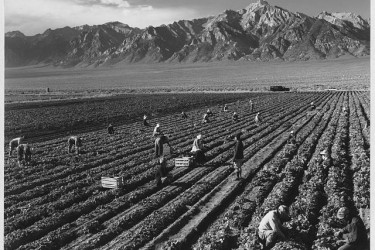This year the questions come up again with a vengeance: What is the role of artists in a crisis? Writers ask, what does my work mean in this larger emergency? Does my personal creativity matter in the vast public sphere? And most immediately, how do I navigate this meltdown?
When the economy collapsed in 1929, American jobs disappeared at the rate of 20,000 a day. That used to impress people before this pandemic. In the Great Depression, the publishing and arts sectors shrank by about a third, like they have again recently. Creatives were desperate. Then, as now, there was private desperation and there was public desperation.
Harry Hopkins, the New Deal’s jobs program coordinator, focused on the public aspect and short-term solutions. When Congress questioned the idea of supporting artists and writers with jobs in the Works Progress Administration, Hopkins replied that artists had to eat like everyone else. In response to protests in New York by unemployed publishing workers who felt abandoned, the WPA began a small Federal Writers’ Project and others for art, music, and theater. The notion behind “work relief” was that paying work could sustain morale better than direct unemployment payments.
Researching a handful of WPA writers and artists for a book and documentary, I was struck by the variety of their personalities and responses. I found myself examining their choices for clues to getting through our own time. Some were already mature artists, like Zora Neale Hurston, Anzia Yezierska, and Dorothea Lange (who ran a portrait studio in San Francisco for over a decade). Others were fresh out of college like May Swenson, Saul Bellow, and Margaret Walker. Some we may not associate with the 1930s, like Ralph Ellison and Kenneth Rexroth, who for most people remains tied to the Beat poets, though he resented the comparison.
Back then there was even less agreement on a public role for creatives. The Writers’ Project assigned them a public role in producing travel guidebooks, histories, and life stories of everyday Americans, including thousands of narratives of formerly enslaved people. New Deal artists created landscapes, murals, street scenes, portraits, sculptures, and abstracts inspired by American life.
But the process of applying for public arts work had none of the cachet of submitting a proposal to the National Endowment of the Arts (which itself emerged under former New Dealer Lyndon Johnson). The 1930s forerunner had no prestige; its application involved proving you were broke. Nine out of ten WPA writers had to show they had no rent money, no job, and no means.


